Abdelwahed Khamis
NeuralPrefix: A Zero-shot Sensory Data Imputation Plugin
Feb 09, 2025Abstract:Real-world sensing challenges such as sensor failures, communication issues, and power constraints lead to data intermittency. An issue that is known to undermine the traditional classification task that assumes a continuous data stream. Previous works addressed this issue by designing bespoke solutions (i.e. task-specific and/or modality-specific imputation). These approaches, while effective for their intended purposes, had limitations in their applicability across different tasks and sensor modalities. This raises an important question: Can we build a task-agnostic imputation pipeline that is transferable to new sensors without requiring additional training? In this work, we formalise the concept of zero-shot imputation and propose a novel approach that enables the adaptation of pre-trained models to handle data intermittency. This framework, named NeuralPrefix, is a generative neural component that precedes a task model during inference, filling in gaps caused by data intermittency. NeuralPrefix is built as a continuous dynamical system, where its internal state can be estimated at any point in time by solving an Ordinary Differential Equation (ODE). This approach allows for a more versatile and adaptable imputation method, overcoming the limitations of task-specific and modality-specific solutions. We conduct a comprehensive evaluation of NeuralPrefix on multiple sensory datasets, demonstrating its effectiveness across various domains. When tested on intermittent data with a high 50% missing data rate, NeuralPreifx accurately recovers all the missing samples, achieving SSIM score between 0.93-0.96. Zero-shot evaluations show that NeuralPrefix generalises well to unseen datasets, even when the measurements come from a different modality.
Locally-Focused Face Representation for Sketch-to-Image Generation Using Noise-Induced Refinement
Nov 28, 2024Abstract:This paper presents a novel deep-learning framework that significantly enhances the transformation of rudimentary face sketches into high-fidelity colour images. Employing a Convolutional Block Attention-based Auto-encoder Network (CA2N), our approach effectively captures and enhances critical facial features through a block attention mechanism within an encoder-decoder architecture. Subsequently, the framework utilises a noise-induced conditional Generative Adversarial Network (cGAN) process that allows the system to maintain high performance even on domains unseen during the training. These enhancements lead to considerable improvements in image realism and fidelity, with our model achieving superior performance metrics that outperform the best method by FID margin of 17, 23, and 38 on CelebAMask-HQ, CUHK, and CUFSF datasets; respectively. The model sets a new state-of-the-art in sketch-to-image generation, can generalize across sketch types, and offers a robust solution for applications such as criminal identification in law enforcement.
Task Progressive Curriculum Learning for Robust Visual Question Answering
Nov 26, 2024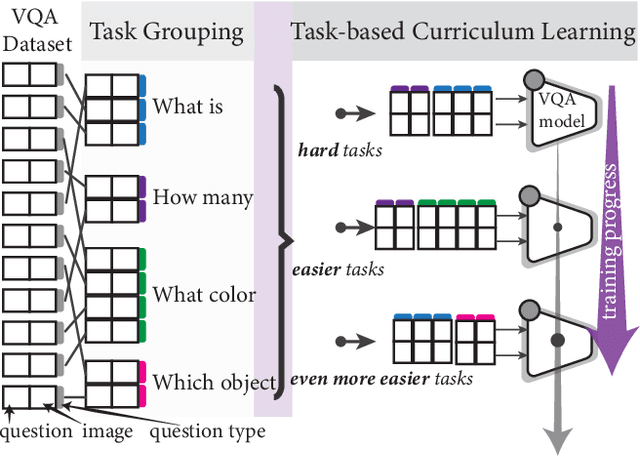
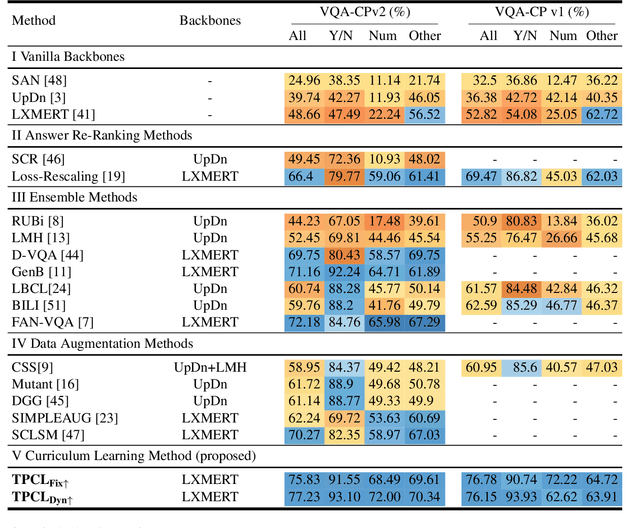
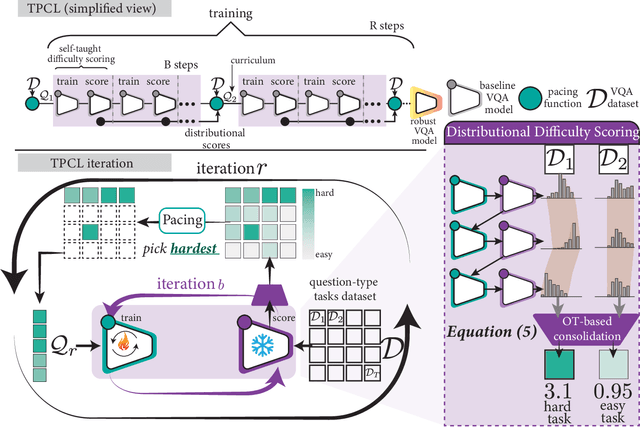
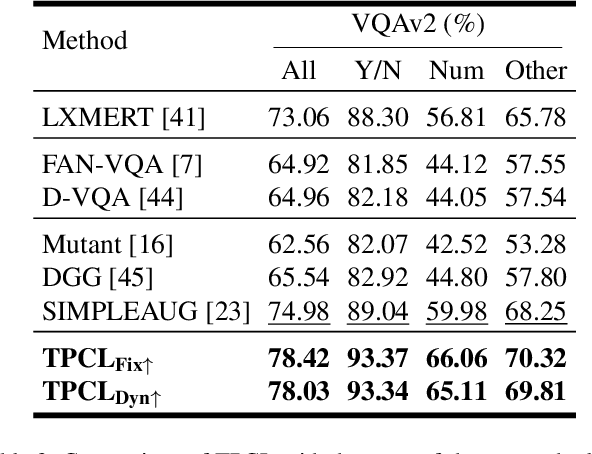
Abstract:Visual Question Answering (VQA) systems are known for their poor performance in out-of-distribution datasets. An issue that was addressed in previous works through ensemble learning, answer re-ranking, or artificially growing the training set. In this work, we show for the first time that robust Visual Question Answering is attainable by simply enhancing the training strategy. Our proposed approach, Task Progressive Curriculum Learning (TPCL), breaks the main VQA problem into smaller, easier tasks based on the question type. Then, it progressively trains the model on a (carefully crafted) sequence of tasks. We further support the method by a novel distributional-based difficulty measurer. Our approach is conceptually simple, model-agnostic, and easy to implement. We demonstrate TPCL effectiveness through a comprehensive evaluation on standard datasets. Without either data augmentation or explicit debiasing mechanism, it achieves state-of-the-art on VQA-CP v2, VQA-CP v1 and VQA v2 datasets. Extensive experiments demonstrate that TPCL outperforms the most competitive robust VQA approaches by more than 5% and 7% on VQA-CP v2 and VQA-CP v1; respectively. TPCL also can boost VQA baseline backbone performance by up to 28.5%.
Real-time Multi-modal Object Detection and Tracking on Edge for Regulatory Compliance Monitoring
Oct 05, 2023Abstract:Regulatory compliance auditing across diverse industrial domains requires heightened quality assurance and traceability. Present manual and intermittent approaches to such auditing yield significant challenges, potentially leading to oversights in the monitoring process. To address these issues, we introduce a real-time, multi-modal sensing system employing 3D time-of-flight and RGB cameras, coupled with unsupervised learning techniques on edge AI devices. This enables continuous object tracking thereby enhancing efficiency in record-keeping and minimizing manual interventions. While we validate the system in a knife sanitization context within agrifood facilities, emphasizing its prowess against occlusion and low-light issues with RGB cameras, its potential spans various industrial monitoring settings.
ICML 2023 Topological Deep Learning Challenge : Design and Results
Oct 02, 2023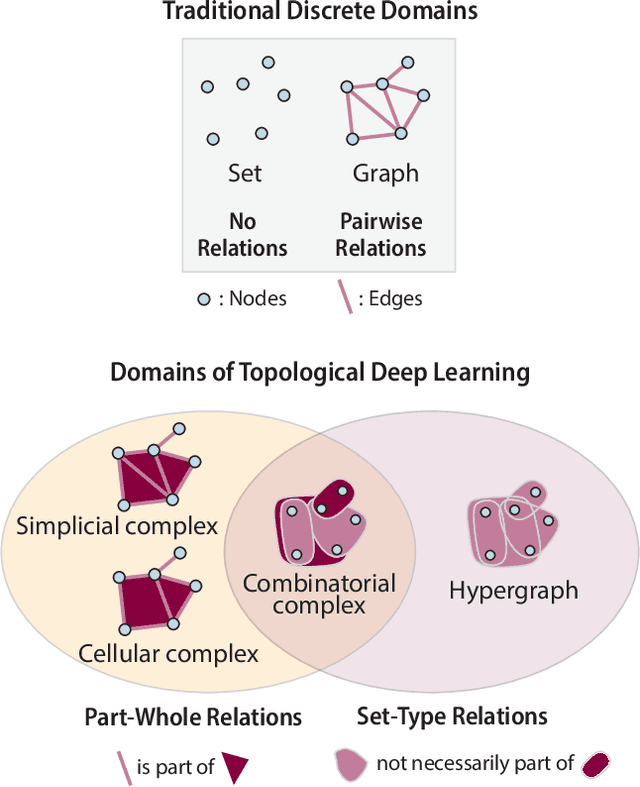
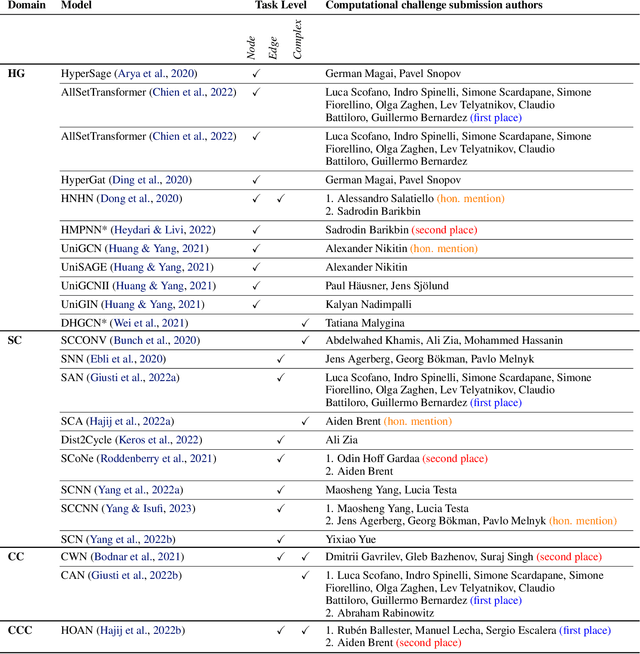
Abstract:This paper presents the computational challenge on topological deep learning that was hosted within the ICML 2023 Workshop on Topology and Geometry in Machine Learning. The competition asked participants to provide open-source implementations of topological neural networks from the literature by contributing to the python packages TopoNetX (data processing) and TopoModelX (deep learning). The challenge attracted twenty-eight qualifying submissions in its two-month duration. This paper describes the design of the challenge and summarizes its main findings.
OCHID-Fi: Occlusion-Robust Hand Pose Estimation in 3D via RF-Vision
Aug 20, 2023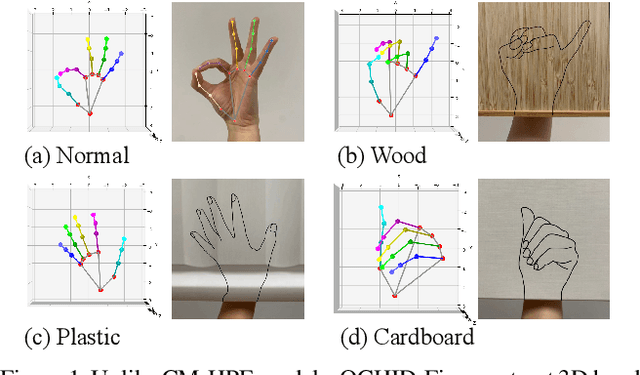

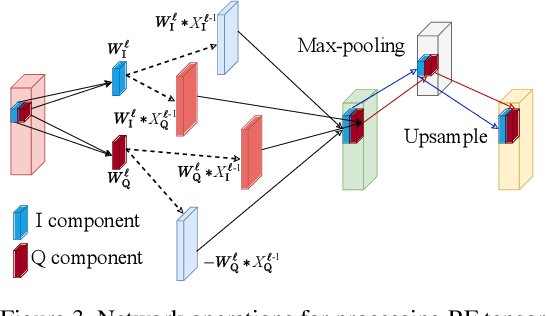

Abstract:Hand Pose Estimation (HPE) is crucial to many applications, but conventional cameras-based CM-HPE methods are completely subject to Line-of-Sight (LoS), as cameras cannot capture occluded objects. In this paper, we propose to exploit Radio-Frequency-Vision (RF-vision) capable of bypassing obstacles for achieving occluded HPE, and we introduce OCHID-Fi as the first RF-HPE method with 3D pose estimation capability. OCHID-Fi employs wideband RF sensors widely available on smart devices (e.g., iPhones) to probe 3D human hand pose and extract their skeletons behind obstacles. To overcome the challenge in labeling RF imaging given its human incomprehensible nature, OCHID-Fi employs a cross-modality and cross-domain training process. It uses a pre-trained CM-HPE network and a synchronized CM/RF dataset, to guide the training of its complex-valued RF-HPE network under LoS conditions. It further transfers knowledge learned from labeled LoS domain to unlabeled occluded domain via adversarial learning, enabling OCHID-Fi to generalize to unseen occluded scenarios. Experimental results demonstrate the superiority of OCHID-Fi: it achieves comparable accuracy to CM-HPE under normal conditions while maintaining such accuracy even in occluded scenarios, with empirical evidence for its generalizability to new domains.
Earth Movers in The Big Data Era: A Review of Optimal Transport in Machine Learning
May 08, 2023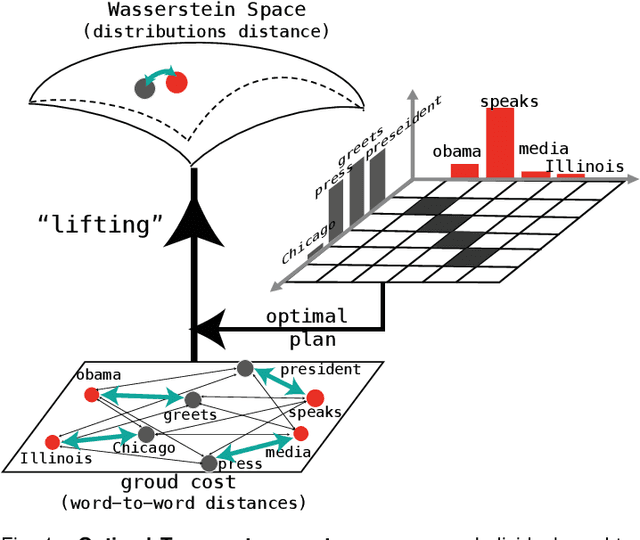
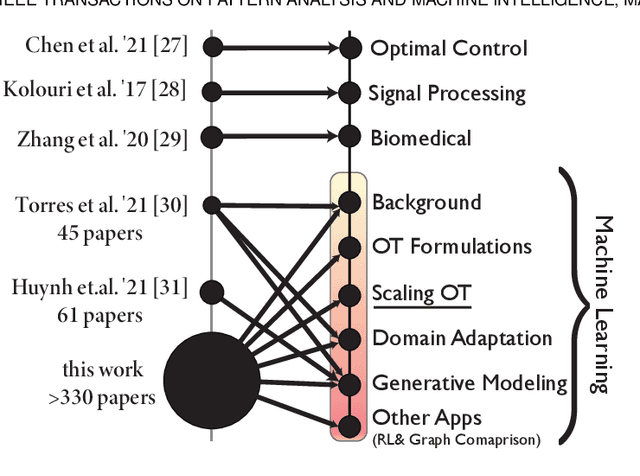
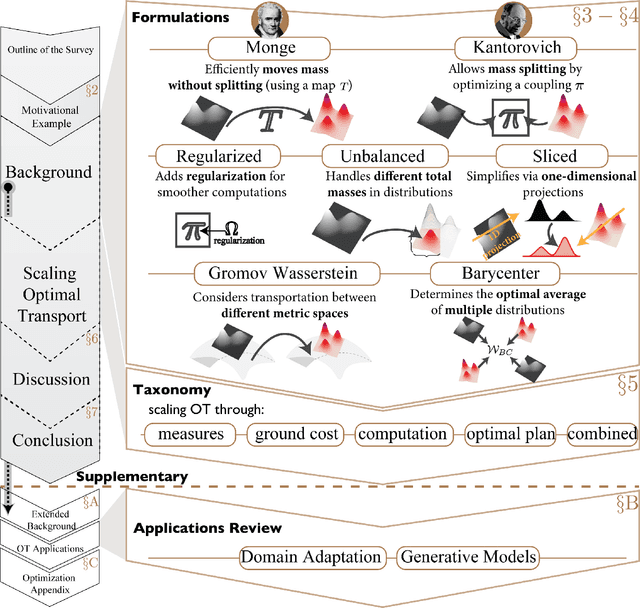
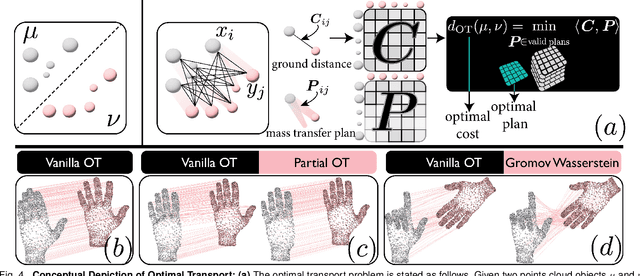
Abstract:Optimal Transport (OT) is a mathematical framework that first emerged in the eighteenth century and has led to a plethora of methods for answering many theoretical and applied questions. The last decade is a witness of the remarkable contributions of this classical optimization problem to machine learning. This paper is about where and how optimal transport is used in machine learning with a focus on the question of salable optimal transport. We provide a comprehensive survey of optimal transport while ensuring an accessible presentation as permitted by the nature of the topic and the context. First, we explain optimal transport background and introduce different flavors (i.e. mathematical formulations), properties, and notable applications. We then address the fundamental question of how to scale optimal transport to cope with the current demands of big and high dimensional data. We conduct a systematic analysis of the methods used in the literature for scaling OT and present the findings in a unified taxonomy. We conclude with presenting some open challenges and discussing potential future research directions. A live repository of related OT research papers is maintained in https://github.com/abdelwahed/OT_for_big_data.git.
Topological Deep Learning: A Review of an Emerging Paradigm
Feb 08, 2023Abstract:Topological data analysis (TDA) provides insight into data shape. The summaries obtained by these methods are principled global descriptions of multi-dimensional data whilst exhibiting stable properties such as robustness to deformation and noise. Such properties are desirable in deep learning pipelines but they are typically obtained using non-TDA strategies. This is partly caused by the difficulty of combining TDA constructs (e.g. barcode and persistence diagrams) with current deep learning algorithms. Fortunately, we are now witnessing a growth of deep learning applications embracing topologically-guided components. In this survey, we review the nascent field of topological deep learning by first revisiting the core concepts of TDA. We then explore how the use of TDA techniques has evolved over time to support deep learning frameworks, and how they can be integrated into different aspects of deep learning. Furthermore, we touch on TDA usage for analyzing existing deep models; deep topological analytics. Finally, we discuss the challenges and future prospects of topological deep learning.
Deep Learning for Radio-based Human Sensing: Recent Advances and Future Directions
Oct 23, 2020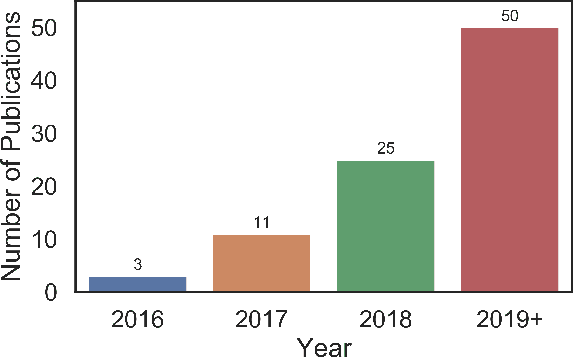

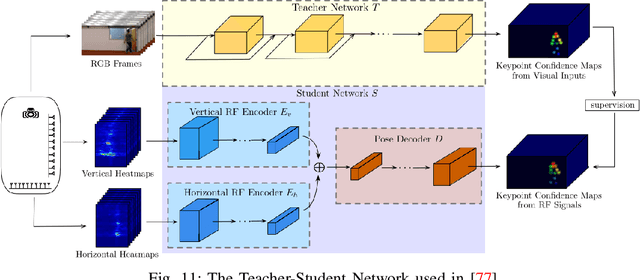
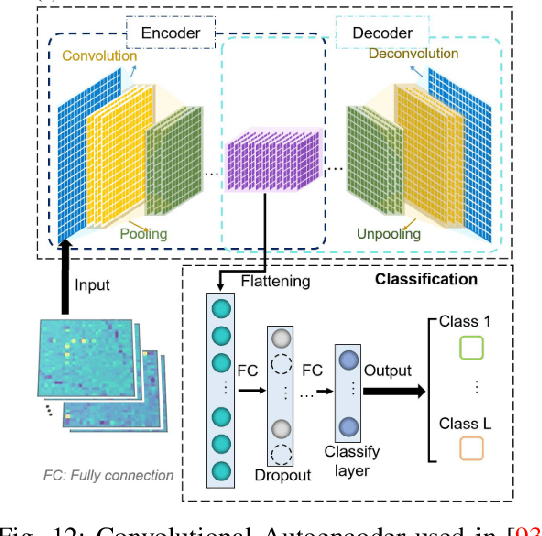
Abstract:While decade-long research has clearly demonstrated the vast potential of radio frequency (RF) for many human sensing tasks, scaling this technology to large scenarios remained problematic with conventional approaches. Recently, researchers have successfully applied deep learning to take radio-based sensing to a new level. Many different types of deep learning models have been proposed to achieve high sensing accuracy over a large population and activity set, as well as in unseen environments. Deep learning has also enabled detection of novel human sensing phenomena that were previously not possible. In this survey, we provide a comprehensive review and taxonomy of recent research efforts on deep learning based RF sensing. We also identify and compare several publicly released labeled RF sensing datasets that can facilitate such deep learning research. Finally, we summarize the lessons learned and discuss the current limitations and future directions of deep learning based RF sensing.
 Add to Chrome
Add to Chrome Add to Firefox
Add to Firefox Add to Edge
Add to Edge